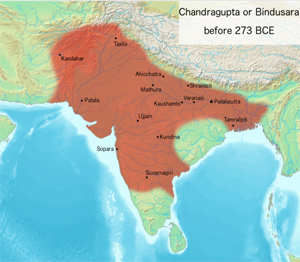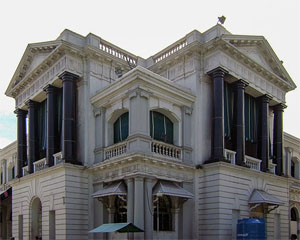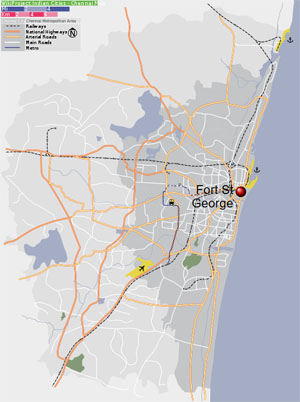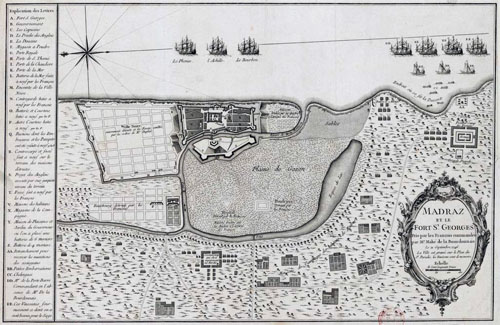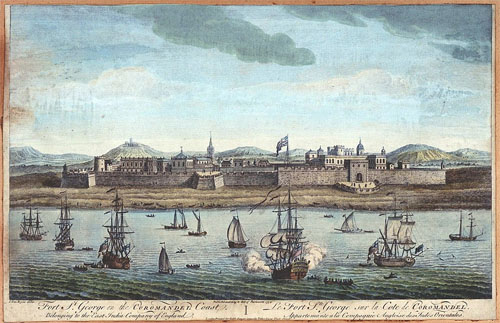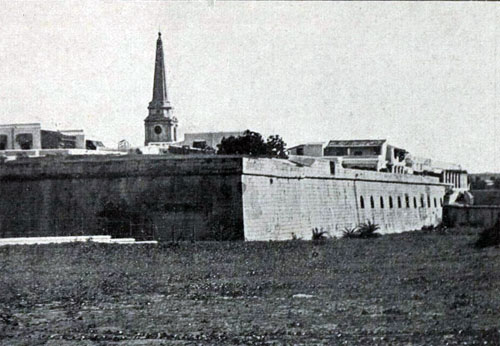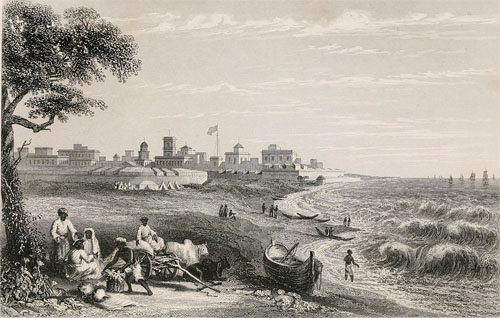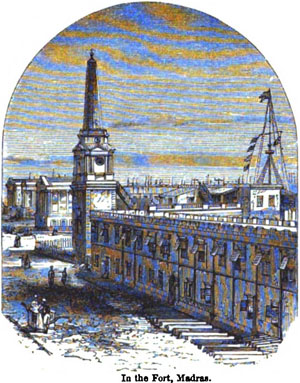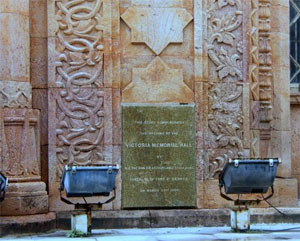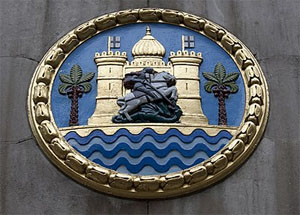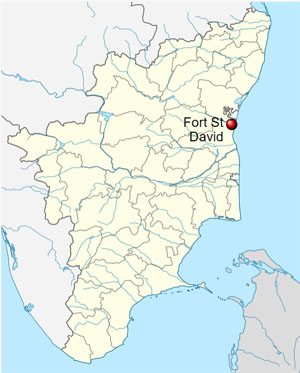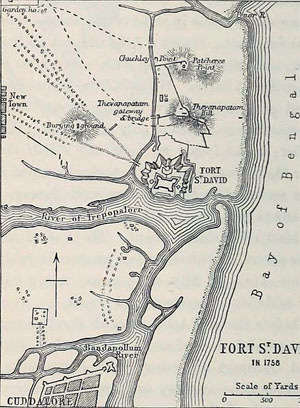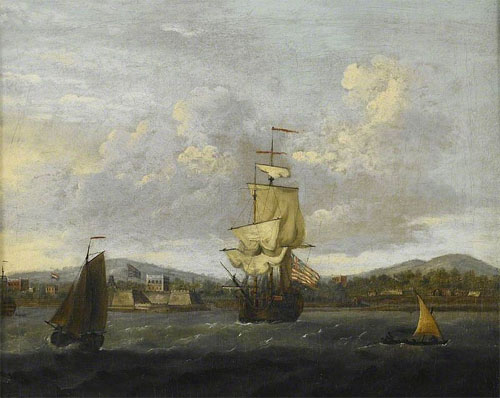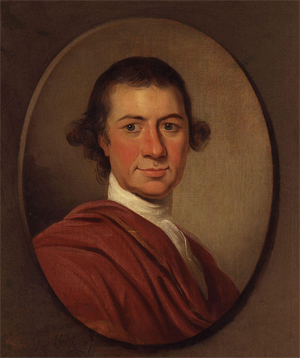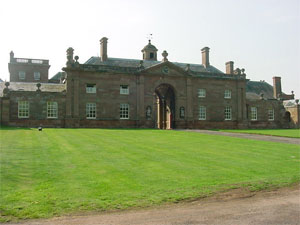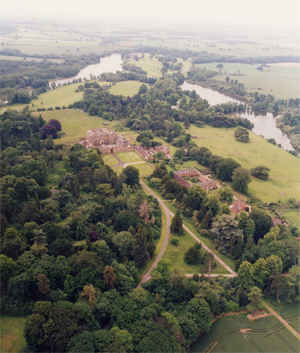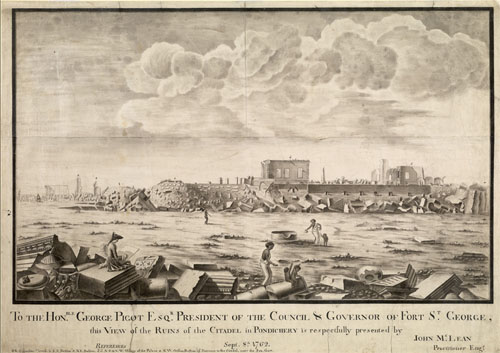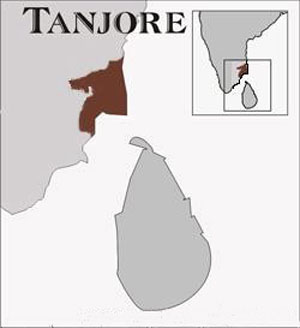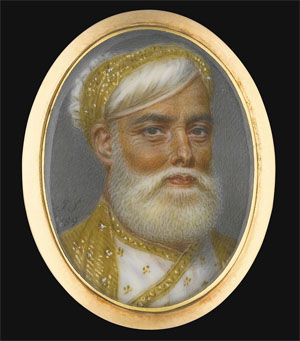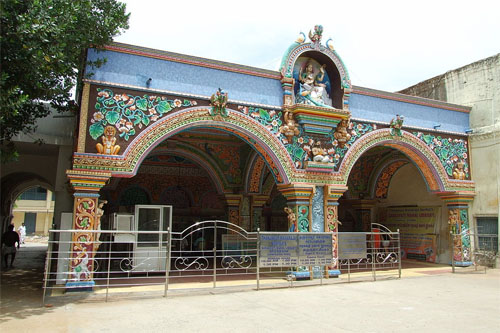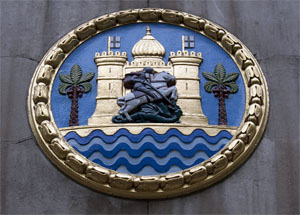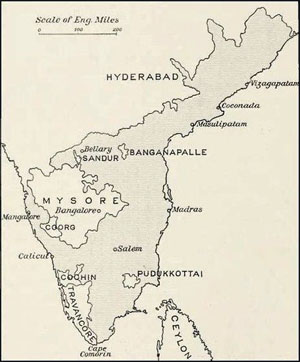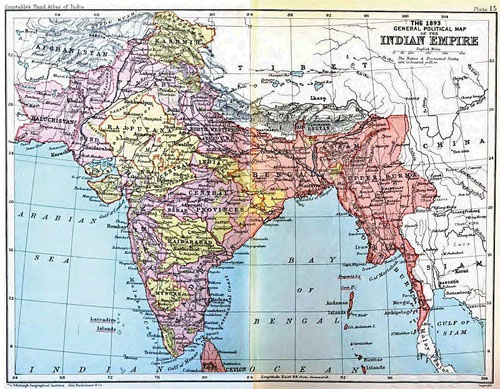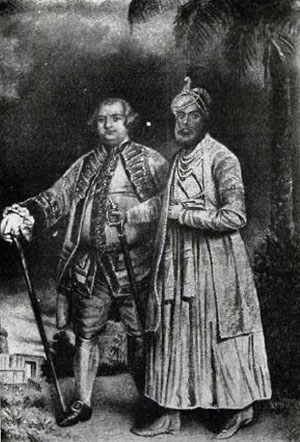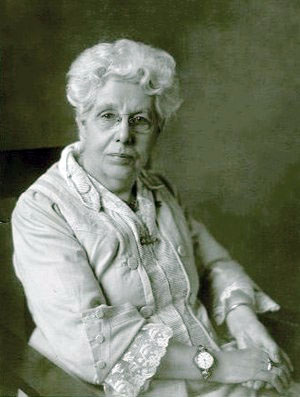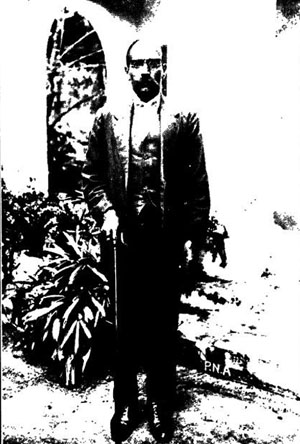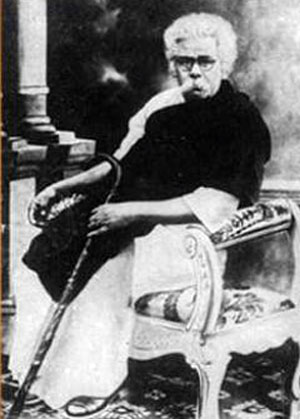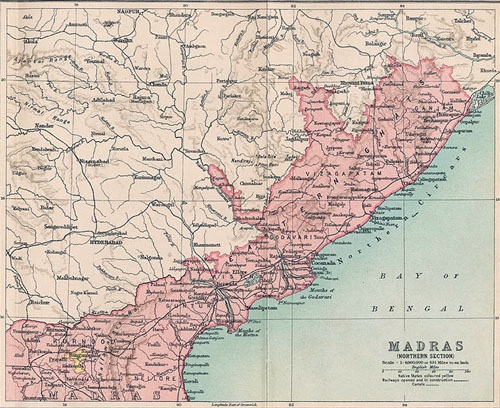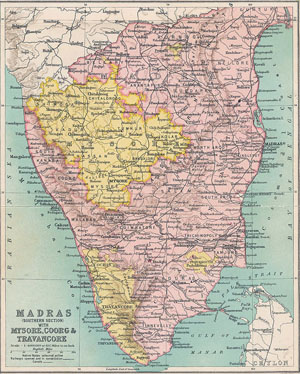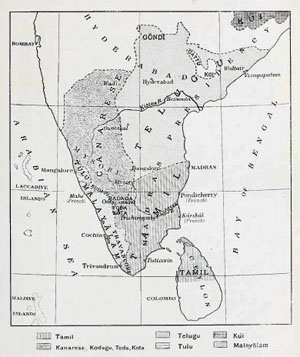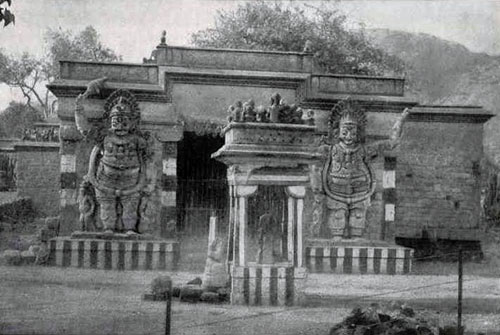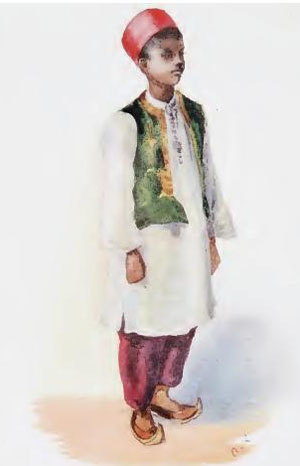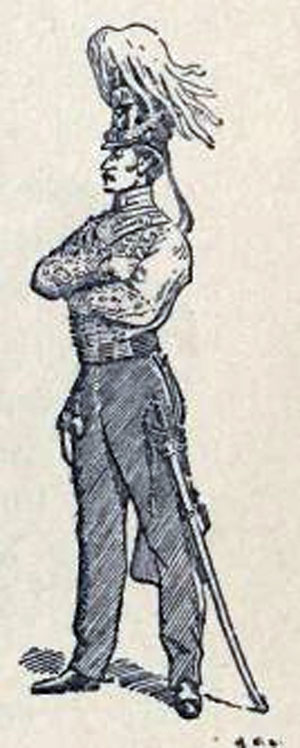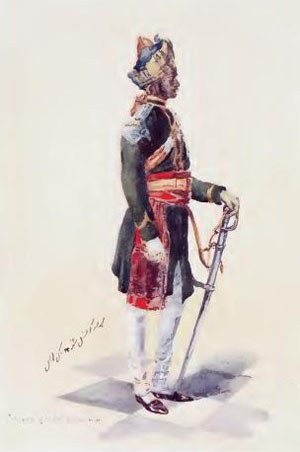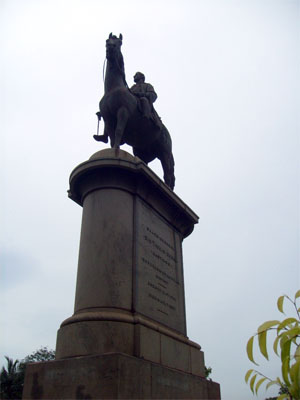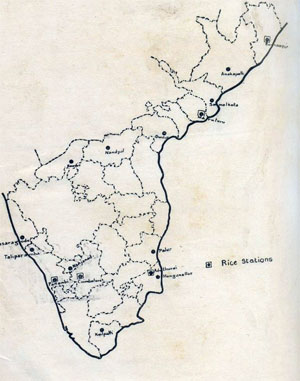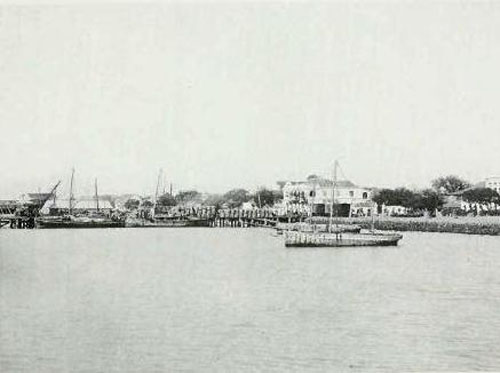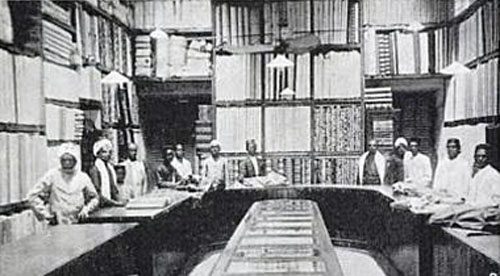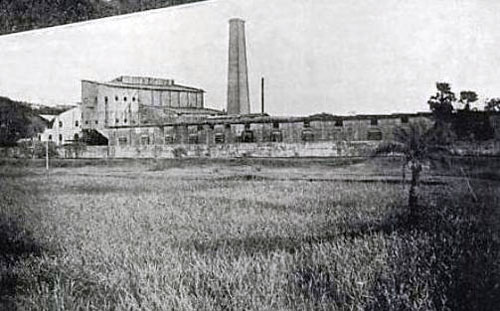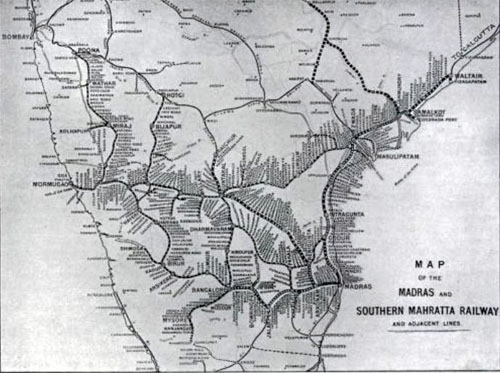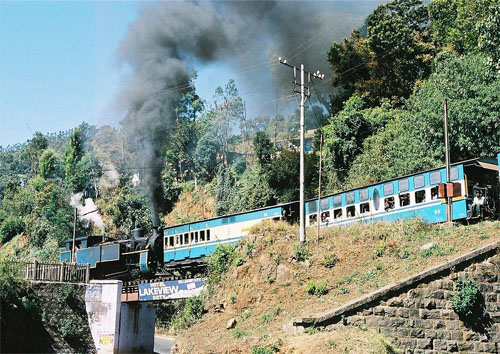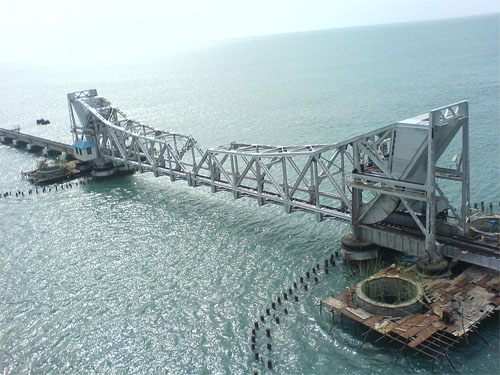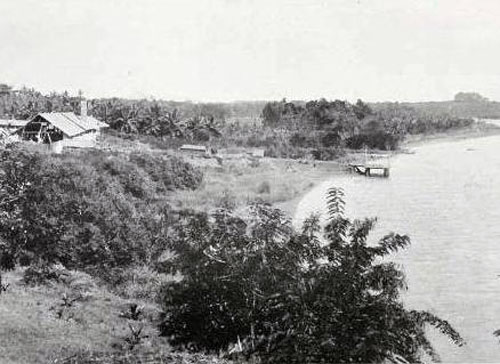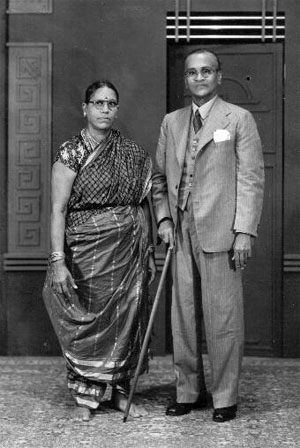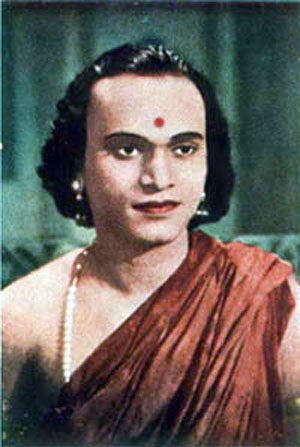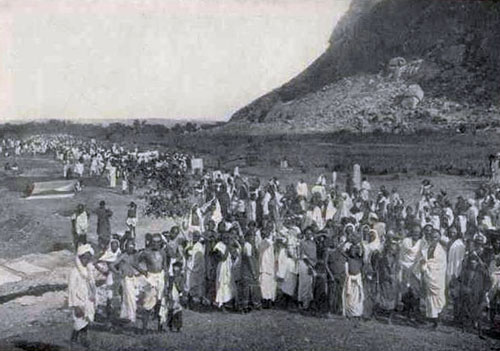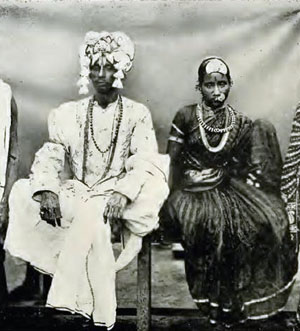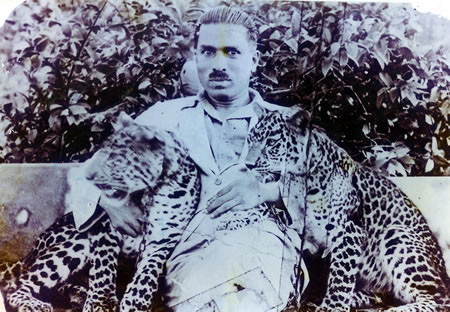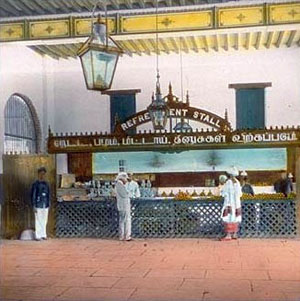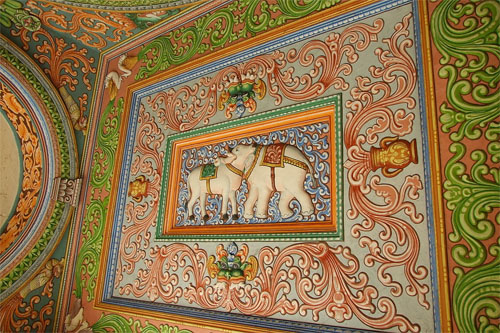Arthashastra
by Wikipedia
Accessed: 6/13/21
Arthashastra
Author Kautilya
Country India
Language Sanskrit
Subject Statecraft, Economic policy and Military strategy
Publication date 3rd century BCE
Text Arthashastra at Wikisource
The Arthaśāstra (Sanskrit: अर्थशास्त्र, IAST: Arthaśāstra) is an ancient Indian Sanskrit treatise on statecraft, economic policy and military strategy.[1][2][3] Kautilya, also identified as Vishnugupta and Chanakya, is traditionally credited as the author of the text.[4][5] The latter was a scholar at Takshashila, the teacher and guardian of Emperor Chandragupta Maurya.[6] Some scholars believe them to be the same person,[7] while most have questioned this identification.[8][9] The text is likely to be the work of several authors over centuries.[10] Composed, expanded and redacted between the 2nd century BCE and 3rd century CE,[11] the Arthashastra was influential until the 12th century, when it disappeared. It was rediscovered in 1905 by R. Shamasastry, who published it in 1909.[12] The first English translation was published in 1915.[13]
The title Arthashastra is often translated to "the science of wealth" (अर्थ),[14][15] but the book has a broader scope.[16] It includes books on the nature of government, law, civil and criminal court systems, ethics, economics, markets and trade, the methods for screening ministers, diplomacy, theories on war, nature of peace, and the duties and obligations of a king.[17][18][19] The text incorporates Hindu philosophy,[20] includes ancient economic and cultural details on agriculture, mineralogy, mining and metals, animal husbandry, medicine, forests and wildlife.[21]
The Arthashastra explores issues of social welfare, the collective ethics that hold a society together, advising the king that in times and in areas devastated by famine, epidemic and such acts of nature, or by war, he should initiate public projects such as creating irrigation waterways and building forts around major strategic holdings and towns and exempt taxes on those affected.[22] The text was influential on other Hindu texts that followed, such as the sections on kings, governance and legal procedures included in Manusmriti.[23][24]
History of the manuscripts
The text was considered lost by colonial era scholars, until a manuscript was discovered in 1905.[25] A copy of the Arthashastra in Sanskrit, written on palm leaves, was presented by a Tamil Brahmin from Tanjore to the newly opened Mysore Oriental Library headed by Benjamin Lewis Rice.[12] The text was identified by the librarian Rudrapatna Shamasastry as the Arthashastra. During 1905–1909, Shamasastry published English translations of the text in installments, in journals Indian Antiquary and Mysore Review.[25][26]
Two books are attributed to Chanakya: Arthashastra, and Chanakya Niti, also known as Chanakya Neeti-shastra. The Arthashastra was discovered in 1905 by librarian Rudrapatna Shamasastry in an uncatalogued group of ancient palm-leaf manuscripts donated by an unknown pandit to the Oriental Research Institute Mysore.Formerly known as the Oriental Library, the Oriental Research Institute (ORI) at Mysore, India, is a research institute which collects, exhibits, edits, and publishes rare manuscripts written in various scripts like Devanagari (Sanskrit), Brahmic (Kannada), Nandinagari (Sanskrit), Grantha, Malayalam, Tigalari, etc.
The Oriental Library was started in 1891 under the patronage of Maharaja Chamarajendra Wadiyar X... It was a part of the Department of Education until 1916, in which year it became part of the newly established University of Mysore. The Oriental Library was renamed as the Oriental Research Institute in 1943.
From the year 1893 to date the ORI has published nearly two hundred titles. The library features rare collections such as the Encyclopaedia of Religion and Ethics by James Hastings, A Vedic Concordance by Maurice Bloomfield, and critical editions of the Ramayana and Mahabharata. It was the first public library in Mysore city for research and editing of manuscripts. The prime focus was on Indology. The institute publishes an annual journal called Mysore Orientalist. Its most famous publications include Kautilya's Arthashastra, written in the 4th century BC, edited by Dr. R. Shamashastri, which brought international fame to the institute when published in 1909.
One day a man from Tanjore handed over a manuscript of Arthashastra written on dried palm leaves to Dr Rudrapatnam Shamashastry, the librarian of Mysore Government Oriental Library now ORI. Shamashastry's job was to look after the library's ancient manuscripts. He had never seen anything like these palm leaves before. Here was a book that would revolutionise the knowledge of India's great past. This palm leaf manuscript is preserved in the library, now named Oriental Research Institute. The pages of the book are filled with 1500-year-old Grantha script. It looks like as if they have been printed but the words have been inscribed by hand. Other copies of Arthashastra were later discovered later in other parts of India.[1]
In this context, my mind remembering a day which was the His Excellency Krishnaraja Wodeyar went to Germany at the time of Dr. R. Shamashastry were working as a curator of Oriental Library, Mysore, The King sat in a meeting held in Germany and introduced himself as the King of Mysore State. Immediately a man stood up and asked, "Are you from our Dr. R. Shamashastry's Mysore?" Because the Arthashastra edited by him took a fame worldwide. The King wondered and came back to Mysore immediately to see Dr. R. Shamashastry, and also Dr. R. Shamashastry appointed as Asthana Vidwan. Sritattvanidhi, is a compilation of slokas by Krishnaraja Wodeyar III. Three edited manuscripts Navaratnamani-mahatmyam (a work on gemology), Tantrasara-sangraha (a work on sculptures and architecture), and Vaidashastra-dipika (an ayurvedic text), Rasa-kaumudi (on mercurial medicine) all of them with English and Kannada translation, are already in advanced stages of printing.
Oriental Research Institute
The ORI houses over 45,000 Palm leaf manuscript bundles and the 75,000 works on those leaves. The manuscripts are palm leaves cut to a standard size of 150 by 35 mm (5.9 by 1.4 in). Brittle palm leaves are sometimes softened by scrubbing a paste made of ragi and then used by the ancients for writing, similar to the use of papyrus in ancient Egypt. Manuscripts are organic materials that run the risk of decay and are prone to be destroyed by silverfish. To preserve them the ORI applies lemon grass oil on the manuscripts which acts like a pesticide. The lemon grass oil also injects natural fluidity into the brittle palm leaves and the hydrophobic nature of the oil keeps the manuscripts dry so that the text is not lost to decay due to humidity.
The conventional method followed at the ORI was to preserve manuscripts by capturing them in microfilm, which then necessitated the use of a microfilm reader for viewing or studying. Once the ORI has digitized the manuscripts, the text can be viewed and manipulated by a computer. Software is then used to put together disjointed pieces of manuscripts and to correct or fill in any missing text. In this manner, the manuscripts are restored and enhanced. The original palm leaf manuscripts are also on reference at the ORI for those interested.
-- Oriental Research Institute Mysore, by Wikipedia
The Arthashastra, which discusses monetary and fiscal policies, welfare, international relations, and war strategies in detail. The text also outlines the duties of a ruler. Some scholars believe that Arthashastra is actually a compilation of a number of earlier texts written by various authors, and Chanakya might have been one of these authors (see above).[9]
• Chanakya Niti, which is a collection of aphorisms, said to be selected by Chanakya from the various shastras.
-- Chanakya, by Wikipedia
During 1923–1924, Julius Jolly and Richard Schmidt published a new edition of the text, which was based on a Malayalam script manuscript in the Bavarian State Library. In the 1950s, fragmented sections of a north Indian version of Arthashastra were discovered in form of a Devanagari manuscript in a Jain library in Patan, Gujarat. A new edition based on this manuscript was published by Muni Jina Vijay in 1959. In 1960, R. P. Kangle published a critical edition of the text, based on all the available manuscripts.[26] Numerous translations and interpretations of the text have been published since then.[25]
The text is an ancient treatise written in 1st millennium BCE Sanskrit, coded, dense and can be interpreted in many ways, with English and Sanskrit being grammatically and syntactically different languages.[27] It has been called, by Patrick Olivelle—whose translation was published in 2013 by Oxford University Press—as the "most difficult translation project I have ever undertaken", parts of the text are still opaque after a century of modern scholarship, and the translation of Kautilya's masterpiece [of] intrigue and political text remains unsatisfactory.[27]
Authorship, date of writing, and structure
The authorship and date of writing are unknown, and there is evidence that the surviving manuscripts are not original and have been modified in their history but were most likely completed in the available form between 2nd-century BCE to 3rd-century CE.[28] Olivelle states that the surviving manuscripts of the Arthashastra are the product of a transmission that has involved at least three major overlapping divisions or layers, which together consist of 15 books, 150 chapters and 180 topics.[29] The first chapter of the first book is an ancient table of contents, while the last chapter of the last book is a short 73 verse epilogue asserting that all thirty two Yukti – elements of correct reasoning methods – were deployed to create the text.[29]
Avoid War
One can lose a war as easily as one can win.
War is inherently unpredictable.
War is also expensive. Avoid war.
Try Upaya (four strategies).
Then Sadgunya (six forms of non-war pressure).
Understand the opponent and seek to outwit him.
When everything fails, resort to military force.
—Arthashastra Books 2.10, 6-7, 10[30]
A notable structure of the treatise is that while all chapters are primarily prose, each transitions into a poetic verse towards its end, as a marker, a style that is found in many ancient Hindu Sanskrit texts where the changing poetic meter or style of writing is used as a syntax code to silently signal that the chapter or section is ending.[29] All 150 chapters of the text also end with a colophon stating the title of the book it belongs in, the topics contained in that book (like an index), the total number of titles in the book and the books in the text.[29] Finally, the Arthashastra text numbers it 180 topics consecutively, and does not restart from one when a new chapter or a new book starts.[29]
The division into 15, 150 and 180 of books, chapters and topics respectively was probably not accidental, states Olivelle, because ancient authors of major Hindu texts favor certain numbers, such as 18 Parvas in the epic Mahabharata.[31] The largest book is the second, with 1,285 sentences, while the smallest is eleventh, with 56 sentences. The entire book has about 5,300 sentences on politics, governance, welfare, economics, protecting key officials and king, gathering intelligence about hostile states, forming strategic alliances, and conduct of war, exclusive of its table of contents and the last epilogue-style book.[31]
Authorship
Stylistic differences within some sections of the surviving manuscripts suggest that it likely includes the work of several authors over the centuries. There is no doubt, states Olivelle, that "revisions, errors, additions and perhaps even subtractions have occurred" in Arthashastra since its final redaction in 300 CE or earlier.[32]
Three names for the text's author are used in various historical sources:
Kauṭilya or Kauṭalya
The text identifies its author by the name "Kauṭilya" or its variant "Kauṭalya": both spellings appear in manuscripts, commentaries, and references in other ancient texts; it is not certain which one of these is the original spelling of the author's name.[33] This person was probably the author of the original recension of Arthashastra: this recension must have been based on works by earlier writers, as suggested by the Arthashastra's opening verse, which states that its author consulted the so-called "Arthashastras" to compose a new treatise.[34]
Vishakhadatta's Mudrarakshasa refers to Kauṭilya as kutila-mati ("crafty-minded"), which has led to suggestions that the word "Kauṭilya" is derived from kutila, the Sanskrit word for "crafty". However, such a derivation is grammatically impossible, and Vishkhadatta's usage is simply a pun.[35] The word "Kauṭilya" or "Kauṭalya" appears to be the name of a gotra (lineage), and is used in this sense in the later literature and inscriptions.[33]
Vishnugupta
A verse at the end of the text identifies its author as "Vishnugupta" (Viṣṇugupta), stating that Vishnugupta himself composed both the text and its commentary, after noticing "many errors committed by commentators on treatises".[36] R. P. Kangle theorized that Vishnugupta was the personal name of the author while Chanakya (Cāṇakya) was the name of his gotra. Others, such as Thomas Burrow and Patrick Olivelle, point out that none of the earliest sources that refer to Chanakya mention the name "Vishnugupta". According to these scholars, "Vishnugupta" may have been the personal name of the author whose gotra name was "Kautilya": this person, however, was different from Chanakya. Historian K C Ojha theorizes that Vishnugupta was the redactor of the final recension of the text.[37]
One of the earliest Sanskrit literatures to identify Chanakya with Vishnugupta explicitly was the Panchatantra.The Panchatantra is an ancient Indian collection of interrelated animal fables...The text's author has been attributed to Vishnu Sharma [Vishnugupta Sharma] in some recensions and Vasubhaga in others, both of which may be pen names....
One version reached Europe in the 11th century. To quote Edgerton (1924): "most of the stories contained in it have "gone down" into the folklore of the story-loving Hindus."...
Most European versions of the text are derivative works of the 12th-century Hebrew version of Panchatantra by Rabbi Joel. In Germany, its translation in 1480 by Anton von Pforr has been widely read.
The prelude section of the Panchatantra identifies an octogenarian Brahmin named Vishnusharma (IAST: Viṣṇuśarman) as its author. He is stated to be teaching the principles of good government to three princes of Amarasakti. It is unclear, states Patrick Olivelle, a professor of Sanskrit and Indian religions, if Vishnusharma was a real person or himself a literary invention. Some South Indian recensions of the text, as well as Southeast Asian versions of Panchatantra attribute the text to Vasubhaga, states Olivelle. Based on the content and mention of the same name in other texts dated to ancient and medieval era centuries, most scholars agree that Vishnusharma is a fictitious name....
Though the text is now known as Panchatantra, the title found in old manuscript versions varies regionally, and includes names such as Tantrakhyayika, Panchakhyanaka, Panchakhyana and Tantropakhyana. The suffix akhyayika and akhyanaka mean "little story" or "little story book" in Sanskrit.
The text was translated into Pahlavi in 550 CE, which forms the latest limit of the text's existence. The earliest limit is uncertain. It quotes identical verses from Arthasastra, which is broadly accepted to have been completed by the early centuries of the common era...
-- Panchatantra, by Wikipedia
K. C. Ojha proposes that the traditional identification of Vishnugupta with Kauṭilya was caused by a confusion of the text's editor and its originator. He suggests that Vishnugupta was a redactor of the original work of Kauṭilya. Thomas Burrow suggests that Chanakya and Kauṭilya may have been two different people.
-- Chanakya, by Wikipedia
Identity
He is generally called Chanakya, but in his capacity as author of the Arthaśhāstra, is generally referred to as Kautilya. The Arthaśhāstra identifies its author by the name Kautilya, except for one verse which refers to him by the name Vishnugupta. One of the earliest Sanskrit literary texts to explicitly identify Chanakya with Vishnugupta was Vishnu Sarma's Panchatantra in the third century B.C.E.A prior time-limit for the Tantrakhyayika may be determined by a reference which it makes to Chanakya. Its author, at stanza 2, pays homage to six authors of hand-books for princes, among them to "Chanakya, the great," whose Artha-sastra, very recently found and published, was known to the author of our text and used by him. Chanakya, otherwise known as Kautilya or Vishnugupta, was the prime-minister of the first king of the Mauryan dynasty, king Chandragupta or [x] of Pataliputra or [x] 821-297 B.C., at whose court Megasthenes lived as ambassador of Seleukos Nikator. The earliest time-limit for the Tantrakhyayika would accordingly be about 800 b.c.
-- The Panchatantra: A Collection of Ancient Hindu Tales In Its Oldest Recension, The Kashmirian, Entitled Tantrakhyayika, by Dr. Johannes Hertel, 1915
Not every historian accepts that Kautilya, Chanakya, and Vishnugupta are the same person. K.C. Ojha suggests that Viṣṇugupta was a redactor of the original work of Kauṭilya, and that the traditional identification of Viṣṇugupta with Kauṭilya was caused by a confusion of the editor with the original author. Thomas Burrow suggests that Cāṇakya and Kauṭilya may have been two different people. The date of origin of the Arthahastra remains problematic, with suggested dates ranging from the fourth century B.C.E. to the third century C.E. [700 years] Most authorities agree that the essence of the book was originally written during the early Mauryan Period (321–296 B.C.E.), but that much of the existing text is post-Mauryan.
-- Kautilya, by New World Encyclopedia[/quote]
Chanakya
The penultimate paragraph of the Arthashastra states that the treatise was authored by the person who rescued the country from the Nanda kings, although it does not explicitly name this person.[38] The Maurya prime minister Chanakya played a pivotal role in the overthrow of the Nanda dynasty. Several later texts identify Chanakya with Kautilya or Vishnugupta: Among the earliest sources, Mudrarakshasa is the only one that uses all three names - Kauṭilya, Vishnugupta, and Chanakya - to refer to the same person. Other early sources use the name Chanakya (e.g. Panchatantra), Vishnugupta (e.g. Kamandaka's Nitisara), both Chanakya and Vishnugupta (Dandin's Dashakumaracharita), or Kautilya (e.g. Bana's Kadambari).[35] The Puranas (Vishnu, Vayu, and Matsya) are the only among the ancient texts that use the name "Kautilya" (instead of the more common "Chanakya") to describe the Maurya prime minister.[35]
Scholars such as R. P. Kangle theorize that the text was authored by the Maurya prime minister Chanakya.[39] Others, such as Olivelle and Thomas Trautmann, argue that this verse is a later addition, and that the identification of Chanakya and Kautilya is a relatively later development that occurred during the Gupta period. Trautmann points out that none of the earlier sources that refer to Chanakya mention his authorship of the Arthashastra.[39] Olivelle proposes that in an attempt to present the Guptas as the legitimate successors of the Mauryas, the author of political treatise followed by the Guptas was identified with the Maurya prime minister.[40]
Chronology
Olivelle states that the oldest layer of text, the "sources of the Kauṭilya", dates from the period 150 BCE – 50 CE. The next phase of the work's evolution, the "Kauṭilya Recension", can be dated to the period 50–125 CE. Finally, the "Śāstric Redaction" (i.e., the text as we have it today) is dated period 175–300 CE.[28]
The Arthasastra is mentioned and dozens of its verses have been found on fragments of manuscript treatises buried in ancient Buddhist monasteries of northwest China, Afghanistan and northwest Pakistan. This includes the Spitzer Manuscript (c. 200 CE) discovered near Kizil in China and the birch bark scrolls now a part of the Bajaur Collection (1st to 2nd century CE) discovered in the ruins of a Khyber Pakhtunkhwa Buddhist site in 1999, state Harry Falk and Ingo Strauch.[41]
The Spitzer Manuscript is the oldest surviving philosophical manuscript in Sanskrit, and possibly the oldest Sanskrit manuscript of any type related to Buddhism and Hinduism discovered so far. The Spitzer Manuscript was found in 1906 in the form of a pile of more than 1,000 palm leaf fragments in the Ming-oi, Kizil Caves, China during the third Turfan expedition headed by Albert Grünwedel. The calibrated age of the manuscript by Carbon-14 technique is 130 CE (80–230 CE). According to the Indologist Eli Franco, the palaeographical features suggest a date closer to 200–230 CE....
The manuscript fragments are actually copies of a collection of older Buddhist and Hindu treatises....
In addition to the Mahabharata, the Spitzer Manuscript refers to or includes sections from the Arthashastra and the Manusmriti (juridical chapters)...
The decayed Spitzer Manuscript does not survive in the form it was discovered in 1906, and portions of it were likely destroyed during the World War II. Of what survives, predominant portions are now at the Staatsbibliothek zu Berlin (Berlin State Library) in Germany and cataloged as SHT 810. Some surviving fragments are now at the British Library, and are cataloged as Or 15005/6–8, Or 15005/17–21 and Or 15005/30–32.
-- Spitzer Manuscript, by Wikipedia
Geography
The author of Arthashastra uses the term gramakuta to describe a village official or chief, which, according to Thomas Burrow, suggests that he was a native of the region that encompasses present-day Gujarat and northern Maharashtra. Other evidences also support this theory: the text mentions that the shadow of a sundial disappears at noon during the month of Ashadha (June-July), and that the day and night are equal during the months of Chaitra (March-April) and Ashvayuja (September-October). This is possible only in the areas lying along the Tropic of Cancer, which passes through central India, from Gujarat in the west to Bengal in the east.[42]
The author of the text appears to be most familiar with the historical regions of Avanti and Ashmaka, which included parts of present-day Gujarat and Maharashtra. He provides precise annual rainfall figures for these historical regions in the text.[42] Plus, he shows familiarity with sea-trade, which can be explained by the existence of ancient sea ports such as Sopara in the Gujarat-Maharashtra region.[43] Lastly, the gotra name Kauṭilya is still found in Maharashtra.[42]
Translation of the title
Different scholars have translated the word "arthashastra" in different ways.
• R.P. Kangle: "Artha is the sustenance or livelihood of men, and Arthaśāstra is the science of the means to Artha"[44] "science of politics";[45]
• A.L. Basham: a "treatise on polity"[14]
• D.D. Kosambi: "science of material gain"[14]
• G.P. Singh: "science of polity"[14]
• Roger Boesche: "science of political economy"[14]
• Patrick Olivelle: "science of politics"[15]
Artha (prosperity, wealth, purpose, meaning, economic security) is one of the four aims of human life in Hinduism (Puruṣārtha),[46] the others being dharma (laws, duties, rights, virtues, right way of living),[47] kama (pleasure, emotions, sex)[48] and moksha (spiritual liberation).[49] Śāstra is the Sanskrit word for "rules" or "science".
Organisation
Arthashastra is divided into 15 book titles, 150 chapters and 180 topics, as follows:[50]
Title / English / Title / English
Raja King Yuvaraja Prince
Senapati Chief, armed forces Parishad Council
Nagarika Town manager Pauravya vaharika City overseer
Mantri Minister Karmika Works officer
Samnidhatr Treasurer Karmantika Director, factories
Antapala Frontier commander Antar vimsaka Head, guards
Dauvarika Chief guard Gopa Revenue officer
Purohita Chaplain Karanika Accounts officer
Prasastr Administrator Nayaka Commander
Upayukta Junior officer Pradeshtri Magistrate
Sunyapala Regent Adhyaksha Superintendent
1. On the Subject of Training, 21 chapters, Topics 1-18
2. On the Activities of Superintendents,
36 chapters, Topics 19-56 (Largest book)
3. On Justices, 20 chapters, Topics 57-75
4. Eradication of Thorns, 13 chapters, Topics 76-88
5. On Secret Conduct, 6 chapters, Topics 89-95
6. Basis of the Circle, 2 chapters, Topics 96-97
7. On the Sixfold Strategy, 18 chapters, Topics 98-126
8. On the Subject of Calamities, 5 chapters, Topics 127-134
9. Activity of a King preparing to March into Battle,
7 chapters, Topics 135-146
10. On War, 6 chapters, Topics 147-159
11. Conduct toward Confederacies, 1 chapter, Topics 160-161
12. On the Weaker King, 5 chapters, Topics 162-170
13. Means of Capturing a Fort, 5 chapters, Topics 171-176
14. On Esoteric Practices, 4 chapters, Topics 177-179
15. Organization of a Scientific Treatise, 1 chapter, Topic 180
Contents
The need for law, economics and government
The ancient Sanskrit text opens, in chapter 2 of Book 1 (the first chapter is table of contents), by acknowledging that there are a number of extant schools with different theories on proper and necessary number of fields of knowledge, and asserts they all agree that the science of government is one of those fields.[52] It lists the school of Brihaspati, the school of Usanas, the school of Manu and itself as the school of Kautilya as examples.[53][54]
सुखस्य मूलं धर्मः । धर्मस्य मूलं अर्थः । अर्थस्य मूलं राज्यं । राज्यस्य मूलं इन्द्रिय जयः । इन्द्रियाजयस्य मूलं विनयः । विनयस्य मूलं वृद्धोपसेवा॥
The root of happiness is Dharma (ethics, righteousness), the root of Dharma is Artha (economy, polity), the root of Artha is right governance, the root of right governance is victorious inner-restraint, the root of victorious inner-restraint is humility, the root of humility is serving the aged.
— Kautilya, Chanakya Sutra 1-6[55]
The school of Usanas asserts, states the text, that there is only one necessary knowledge, the science of government because no other science can start or survive without it.[52][53] The school of Brihaspati asserts, according to Arthashastra, that there are only two fields of knowledge, the science of government and the science of economics (Varta[note 1] of agriculture, cattle and trade) because all other sciences are intellectual and mere flowering of the temporal life of man.[52][54] The school of Manu asserts, states Arthashastra, that there are three fields of knowledge, the Vedas, the science of government and the science of economics (Varta of agriculture, cattle and trade) because these three support each other, and all other sciences are special branch of the Vedas.[52][54]
The Arthashastra then posits its own theory that there are four necessary fields of knowledge, the Vedas, the Anvikshaki (philosophy of Samkhya, Yoga and Lokayata),[note 2] the science of government and the science of economics (Varta of agriculture, cattle and trade). It is from these four that all other knowledge, wealth and human prosperity is derived.[52][54] The Kautilya text thereafter asserts that it is the Vedas that discuss what is Dharma (right, moral, ethical) and what is Adharma (wrong, immoral, unethical), it is the Varta that explain what creates wealth and what destroys wealth, it is the science of government that illuminates what is Nyaya (justice, expedient, proper) and Anyaya (unjust, inexpedient, improper), and that it is Anvishaki (philosophy)[58] that is the light of these sciences, as well as the source of all knowledge, the guide to virtues, and the means to all kinds of acts.[52][54] He says of government in general:
Without government, rises disorder as in the Matsya nyayamud bhavayati (proverb on law of fishes). In the absence of governance, the strong will swallow the weak. In the presence of governance, the weak resists the strong.[59][60]
Raja (king)
The best king is the Raja-rishi, the sage king.[61][62]
The Raja-rishi has self-control and does not fall for the temptations of the senses, he learns continuously and cultivates his thoughts, he avoids false and flattering advisors and instead associates with the true and accomplished elders, he is genuinely promoting the security and welfare of his people, he enriches and empowers his people, he practices ahimsa[citation needed](non-violence against all living beings), he lives a simple life and avoids harmful people or activities, he keeps away from another's wife nor craves for other people's property.[61][63][62] The greatest enemies of a king are not others, but are these six: lust, anger, greed, conceit, arrogance and foolhardiness.[61][58] A just king gains the loyalty of his people not because he is king, but because he is just.[61][62]
Officials, advisors and checks on government
Book 1 and Book 2 of the text discusses how the crown prince should be trained and how the king himself should continue learning, selecting his key Mantri (ministers), officials, administration, staffing of the court personnel, magistrates and judges.[64]
Topic 2 of the Arthashastra, or chapter 5 of Book 1, is dedicated to the continuous training and development of the king, where the text advises that he maintain a counsel of elders, from each field of various sciences, whose accomplishments he knows and respects.[62][65] Topic 4 of the text describes the process of selecting the ministers and key officials, which it states must be based on king's personal knowledge of their honesty and capacity.[66] Kautilya first lists various alternate different opinions among extant scholars on how key government officials should be selected, with Bharadvaja suggesting honesty and knowledge be the screen for selection, Kaunapadanta suggesting that heredity be favored, Visalaksha suggesting that king should hire those whose weaknesses he can exploit, Parasara cautioning against hiring vulnerable people because they will try to find king's vulnerability to exploit him instead, and yet another who insists that experience and not theoretical qualification be primary selection criterion.[66]
Kautilya, after describing the conflicting views on how to select officials, asserts that a king should select his Amatyah (ministers and high officials) based on the capacity to perform that they have shown in their past work, the character and their values that is accordance with the role.[67] The Amatyah, states Arthashastra, must be those with following Amatya-sampat: well trained, with foresight, with strong memory, bold, well spoken, enthusiastic, excellence in their field of expertise, learned in theoretical and practical knowledge, pure of character, of good health, kind and philanthropic, free from procrastination, free from ficklemindedness, free from hate, free from enmity, free from anger, and dedicated to dharma.[68][69] Those who lack one or a few of these characteristics must be considered for middle or lower positions in the administration, working under the supervision of more senior officials.[68] The text describes tests to screen for the various Amatya-sampat.[68]
The Arthashastra, in Topic 6, describes checks and continuous measurement, in secret, of the integrity and lack of integrity of all ministers and high officials in the kingdom.[70] Those officials who lack integrity must be arrested. Those who are unrighteous, should not work in civil and criminal courts. Those who lack integrity in financial matters or fall for the lure of money must not be in revenue collection or treasury, states the text, and those who lack integrity in sexual relationships must not be appointed to Vihara services (pleasure grounds).[71] The highest level ministers must have been tested and have successfully demonstrated integrity in all situations and all types of allurements.[71][72]
Chapter 9 of Book 1 suggests that the king maintain a council and a Purohit (chaplain, spiritual guide) for his personal counsel. The Purohit, claims the text, must be one who is well educated in the Vedas and its six Angas.[68]
Causes of impoverishment, lack of motivation and disaffection among people

Chanakya portrait in 1915 Shamasastry's Arthashastra translation.
The Arthashastra, in Topic 109, Book 7 lists the causes of disaffection, lack of motivation and increase in economic distress among people. It opens by stating that wherever "good people are snubbed, and evil people are embraced" distress increases.[73] Wherever officials or people initiate unprecedented violence in acts or words, wherever there is unrighteous acts of violence, disaffection grows.[74] When the king rejects the Dharma, that is "does what ought not to be done, does not do what ought to be done, does not give what ought to be given, and gives what ought not to be given", the king causes people to worry and dislike him.[73][74]
Anywhere, states Arthashastra in verse 7.5.22, where people are fined or punished or harassed when they ought not to be harassed, where those that should be punished are not punished, where those people are apprehended when they ought not be, where those who are not apprehended when they ought to, the king and his officials cause distress and disaffection.[73] When officials engage in thievery, instead of providing protection against robbers, the people are impoverished, they lose respect and become disaffected.[73][74]
A state, asserts Arthashastra text in verses 7.5.24 - 7.5.25, where courageous activity is denigrated, quality of accomplishments are disparaged, pioneers are harmed, honorable men are dishonored, where deserving people are not rewarded but instead favoritism and falsehood is, that is where people lack motivation, are distressed, become upset and disloyal.[73][74]
In verse 7.5.33, the ancient text remarks that general impoverishment relating to food and survival money destroys everything, while other types of impoverishment can be addressed with grants of grain and money.[73][74]
Civil, criminal law and court system
Crime and punishment
It is power and power alone which, only when exercised by the king with impartiality and in proportion to guilt either over his son or his enemy, maintains both this world and the next.
The just and victorious king administers justice in accordance with Dharma (established law), Sanstha (customary law), Nyaya (edicts, announced law) and Vyavahara (evidence, conduct).
— Arthashastra 3.1[75][76]
Book 3 of the Arthashastra, according to Trautmann, is dedicated to civil law, including sections relating to economic relations of employer and employee, partnerships, sellers and buyers.[77] Book 4 is a treatise on criminal law, where the king or officials acting on his behalf, take the initiative and start the judicial process against acts of crime, because the crime is felt to be a wrong against the people of the state.[77][78] This system, as Trautmann points out, is similar to European system of criminal law, rather than other historic legal system, because in the European (and Arthashastra) system it is the state that initiates judicial process in cases that fall under criminal statutes, while in the latter systems the aggrieved party initiates a claim in the case of murder, rape, bodily injury among others.[77]
The ancient text stipulates that the courts have a panel of three pradeshtri (magistrates) for handling criminal cases, and this panel is different, separate and independent of the panel of judges of civil court system it specifies for a Hindu kingdom.[77][78] The text lays out that just punishment is one that is in proportion to the crime in many sections starting with chapter 4 of Book 1,[79][80] and repeatedly uses this principle in specifying punishments, for example in Topic 79, that is chapter 2 of Book 4.[81] Economic crimes such as conspiracy by a group of traders or artisans is to be, states the Arthashastra, punished with much larger and punitive collective fine than those individually, as conspiracy causes systematic damage to the well-being of the people.[77][78]
Marriage laws
The text discusses marriage and consent laws in Books 3 and 4. It asserts, in chapter 4.2, that a girl may marry any man she wishes,[note 3][note 4] three years after her first menstruation, provided that she does not take her parent's property or ornaments received by her before the marriage. However, if she marries a man her father arranges or approves of, she has the right to take the ornaments with her.[81][82]
In chapter 3.4, the text gives the right to a woman that she may remarry anyone if she wants to, if she has been abandoned by the man she was betrothed to, if she does not hear back from him for three menstrual periods, or if she does hear back and has waited for seven menses.[84][85]
The chapter 2 of Book 3 of Arthashastra legally recognizes eight types of marriage. The bride is given the maximum property inheritance rights when the parents select the groom and the girl consents to the selection (Brahma marriage), and minimal if bride and groom marry secretly as lovers (Gandharva marriage) without the approval of her father and her mother.[86] However, in cases of Gandharva marriage (love), she is given more rights than she has in Brahma marriage (arranged), if the husband uses the property she owns or has created, with husband required to repay her with interest when she demands.[86][87]
Wildlife and forests
Arthashastra states that forests be protected and recommends that the state treasury be used to feed animals such as horses and elephants that are too old for work, sick or injured.[88] However, Kautilya also recommends that wildlife that is damaging crops should be restrained with state resources. In Topic 19, chapter 2, the text suggests:
The king should grant exemption [from taxes]
to a region devastated by an enemy king or tribe,
to a region beleaguered by sickness or famine.
He should safeguard agriculture
when it is stressed by the hardships of fines, forced labor, taxes, and animal herds
when they are harassed by thieves, vicious animals, poison, crocodiles or sickness
He should keep trade routes [roads] clear
when they are oppressed by anyone, including his officers, robbers or frontier commanders
when they are worn out by farm animals
The king should protect produce, forests, elephants forests, reservoirs and mines
established in the past and also set up new ones.[89]
In topic 35, the text recommends that the "Superintendent of Forest Produce" appointed by the state for each forest zone be responsible for maintaining the health of the forest, protecting forests to assist wildlife such as elephants (hastivana), but also producing forest products to satisfy economic needs, products such as Teak, Palmyra, Mimosa, Sissu, Kauki, Sirisha, Catechu, Latifolia, Arjuna, Tilaka, Tinisa, Sal, Robesta, Pinus, Somavalka, Dhava, Birch, bamboo, hemp, Balbaja (used for ropes), Munja, fodder, firewood, bulbous roots and fruits for medicine, flowers.[90] The Arthashastra also reveals that the Mauryas designated specific forests to protect supplies of timber, as well as lions and tigers, for skins.[citation needed]
Mines, factories and superintendents
The Arthashastra dedicates Topics 30 through 47 discussing the role of government in setting up mines and factories,[91] gold and precious stone workshops,[92] commodities,[93] forest produce,[94] armory,[95] standards for balances and weight measures,[96] standards for length and time measures,[96] customs,[97] agriculture,[98] liquor,[98] abattoirs and courtesans,[99] shipping,[100] domesticated animals such as cattle, horses and elephants along with animal welfare when they are injured or too old,[101] pasture land,[102] military preparedness[103] and intelligence gathering operations of the state.[104]
On spying, propaganda and information
Femme fatale as a secret agent
To undermine a ruling oligarchy, make chiefs of the [enemy's] ruling council infatuated with women possessed of great beauty and youth. When passion is roused in them, they should start quarrels by creating belief (about their love) in one and by going to another.
— Arthashastra 11.1[105][106]
The Arthashastra dedicates many chapters on the need, methods and goals of secret service, and how to build then use a network of spies that work for the state. The spies should be trained to adopt roles and guises, to use coded language to transmit information, and be rewarded by their performance and the results they achieve, states the text.[107][note 5]
The roles and guises recommended for Vyanjana (appearance) agents by the Arthashastra include ascetics, forest hermits, mendicants, cooks, merchants, doctors, astrologers, consumer householders, entertainers, dancers, female agents and others.[109] It suggests that members from these professions should be sought to serve for the secret service.[110] A prudent state, states the text, must expect that its enemies seek information and are spying inside its territory and spreading propaganda, and therefore it must train and reward double agents to gain identity about such hostile intelligence operations.[111]
The goals of the secret service, in Arthashastra, was to test the integrity of government officials, spy on cartels and population for conspiracy, to monitor hostile kingdoms suspected of preparing for war or in war against the state, to check spying and propaganda wars by hostile states, to destabilize enemy states, to get rid of troublesome powerful people who could not be challenged openly.[112][105] The spy operations and its targets, states verse 5.2.69 of Arthashastra, should be pursued "with respect to traitors and unrighteous people, not with respect to others".[113]

